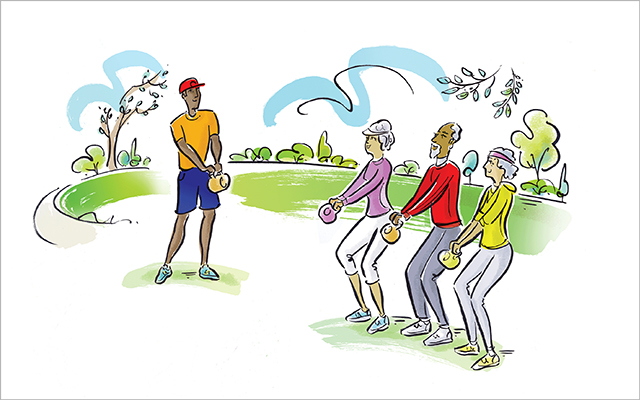Ever since childhood, I’ve been the type to push through when it comes to physical activity. It started when I began playing team sports and attending regular practices in elementary school. As my teammates and I did drills, sprints, and countless burpees, I learned that if I wanted to be competitive and earn a starting spot on the team, I had to go all in. All the time.
That effort paid off in my teen years: I was a starter on most of the volleyball and basketball teams I played on; I was moved up to the varsity basketball team as a sophomore in high school.
Back then, it was all about maintaining peak performance — even in the off-season — so I could keep my position on the court. By the time the playing season began, I often dreaded the nightly practices, where so much of the hardest work was put in. But I loved playing the game, so I kept pushing.
I haven’t played organized sports for many years, but my max-effort attitude about physical activity has carried through. As I’ve pursued my personal fitness goals, I’ve continued to drive for results in the name of staying fit and healthy. But there are other approaches, as I discovered this past summer.
Despite a nagging back issue and aching joints, I had continued my usual workout regimen. I was feeling and looking strong, so why change things?
But then I started working with a new personal trainer, whose philosophy is about establishing a solid foundation. That meant identifying and correcting imbalances and movement-pattern issues, and making sure I was firing the right muscles with the right foundational movements.
As it turns out, I hadn’t been firing the right muscles in many basic moves, including squats. Instead, I had been overtraining certain muscle groups and using that strength to compensate for my weaknesses — which was contributing to my back pain and achy joints. (My desk job played a role, too.)
So, early in our work together, my trainer had me take a step back from my usual regimen and focus on the basics. It felt like I was starting over as I began practicing new movement patterns after 25 years of activity. It was humbling and often frustrating.
But my trainer continually reminded me of the importance of doing motions correctly before progressing. So I kept at the subtle movement shifts and body work, and I committed to putting in time on my own as well.
Within a month, my back pain dissipated and my hips began to hurt less. A few weeks after that, I did my first pain-free, good-form squat in years. And just last month, five months into our training, I did my first pull-up ever.
My newfound strength comes from a more well-rounded place — one that feels good physically and emotionally. And my eyes are now open to a whole new, more sustainable way of training.
Throughout this issue, you’ll read inspiring examples of people who’ve succeeded in starting again, including Olympic gold medalist Kikkan Randall (“Back to the Start: Kikkan Randall”), My Turnaround storyteller Hannah Bower (“Hannah Bower’s Success Story”), and members of the military who’ve embraced whole-person approaches to take care of their health (“How Functional Medicine Came to the Military”).
We’re starting fresh in these pages, too, with new departments aimed at helping you continue to progress in your healthy-living journey: Be sure to check out Foodstuff, Ingredients, Natural Mental Health (“NATURAL MENTAL HEALTH: Integrative Insights”), and Green Space (“The High Cost of Litter”).
It’s easy to get comfortable in the way things are, but change — whatever it may be — can be a very good thing when we’re willing to give it a shot.




This Post Has 0 Comments